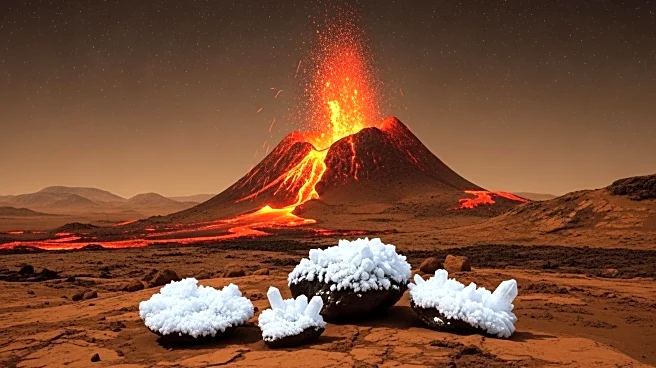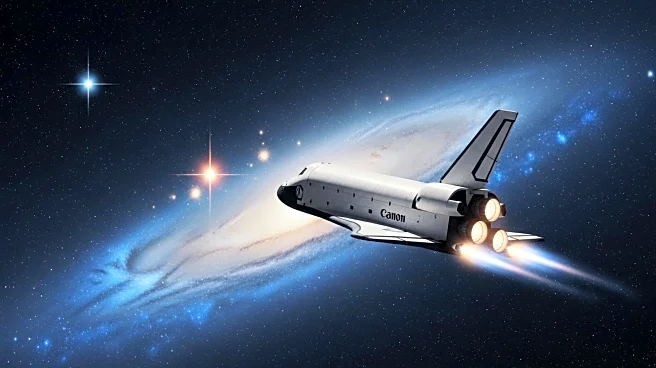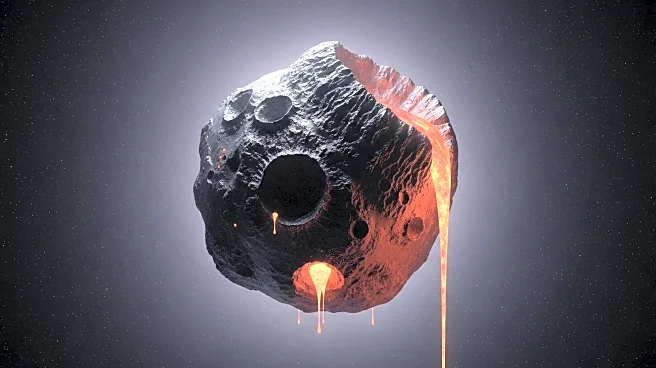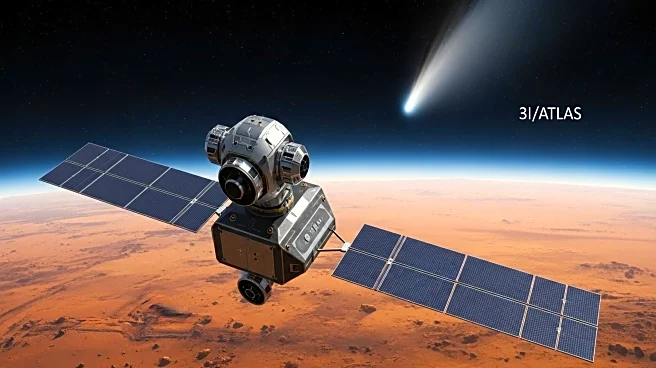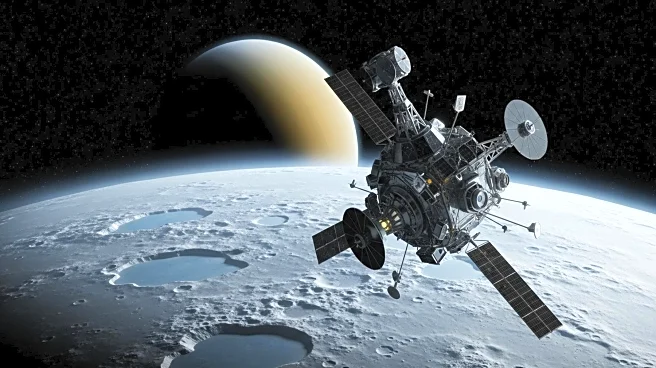What's Happening?
Simulations using a planetary climate model suggest that explosive volcanic eruptions on Mars may have contributed to unexpected ice deposits at the equator. The model indicates that volcanic water and sulfuric acid released during eruptions could have formed clouds, leading to precipitation and ice accumulation. The study explores the dynamics of volcanic plumes and their interaction with Mars' atmosphere, highlighting the role of volcanic activity in shaping the planet's climate and surface features.
Why It's Important?
This research provides a new perspective on the climatic and geological processes that have influenced Mars' surface. Understanding the mechanisms behind ice formation at the equator could aid in the planning of future missions, offering potential resources for human exploration. The findings challenge existing models of Mars' climate history, suggesting that volcanic activity played a significant role in its development. This could impact the search for life and the assessment of Mars' habitability.
What's Next?
Further research may focus on refining the climate model and exploring the implications of volcanic activity on Mars' atmospheric composition. Scientists may conduct additional simulations to test different eruption scenarios and their effects on ice distribution. These studies could provide more detailed insights into Mars' geological history and guide future exploration strategies.
Beyond the Headlines
The study underscores the importance of considering volcanic activity in planetary climate models. It suggests that Mars' geological processes are more complex than previously understood, with implications for the study of other planets and moons.
